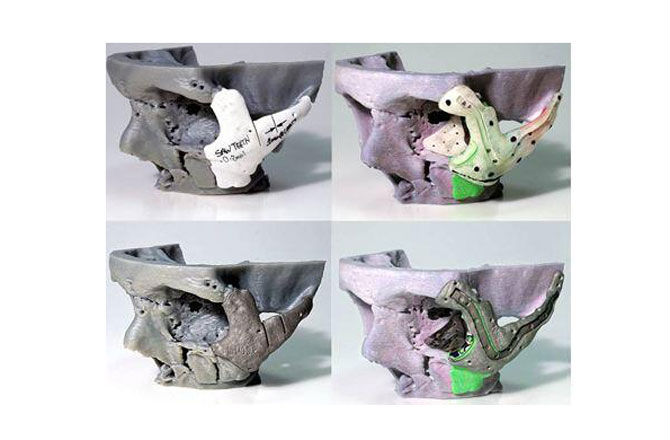3D-printing is probably one of the most intriguing new technologies of the modern age, simply because there are so many possible ways to use it. People can 3D print artwork, jewelry, candy, architectural models, and even body parts, like this skull a man in Wales just received after his motorcycle accident in 2012.

Stephen Powell crushed the top of his jaw, his cheekbones, nose and half of his skull during his accident, leaving him in the hospital for months afterwards. Once released, Powell wore a hat and glasses to hide his facial asymmetry until his most recent surgery.
Together with the Center of Applied Reconstructive Technology in Surgery and the National Center for Product Design and Development research, maxillofacial surgeon Adrian Sugar reconstructed Powell’s skull using 3D printing.
First, the undamaged side of Powell’s skull was scanned, an image that was used to construct a 3D model. That model was used to create 3D-printed medical-grade plates and custom bone saw guides. The eight-hour procedure took place at Morristan Hospital in Swansea, where the surgical team used these 3D-printed tools to reconstruct Powell’s skull.
According to Powell on Discovery, the surgery caused an immediate difference—a “life-changing” type of difference. Surgeries involving 3D-printing are still a long way off from being the norm and are still expensive compared to more traditional types of surgery, but the benefits are clearly visible. Like the rest of the world, medical professionals are excited about the advancements 3D-printing technology will bring to their field.
Sugar’s project is currently featured in a Science Museum of London exhibition on 3D-printing, which you can find here if you want more information.
Source Discovery
Advertisement





